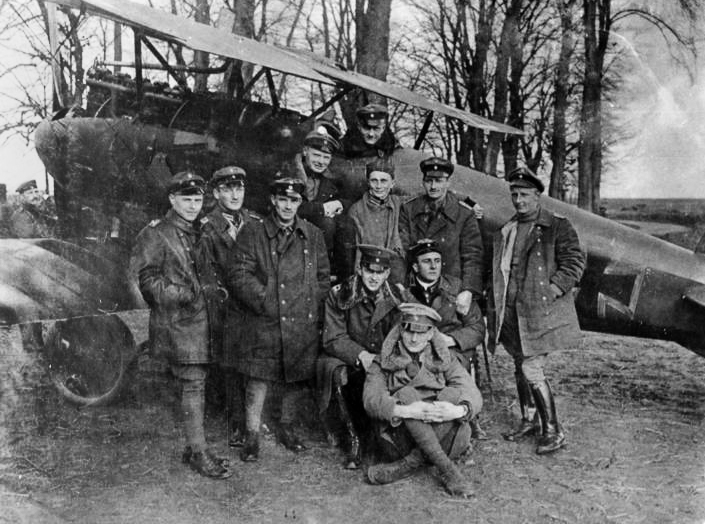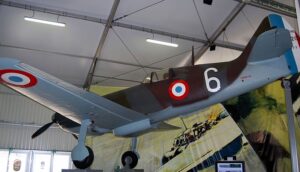During the early stages of World War II, the German Luftwaffe achieved notable successes, particularly during the invasions of Poland and France. However, the Battle of Britain marked a significant turning point, as the Royal Air Force‘s successful defense against German air attacks halted the Luftwaffe’s attempt to establish air superiority over the United Kingdom.
As the war progressed, the Luftwaffe faced challenges on multiple fronts, including the Eastern Front against the Soviet Union and the Mediterranean theater. The introduction of advanced aircraft, such as the jet-powered Messerschmitt Me 262, showcased technological innovation but came too late to reverse the tide of the war.
By the war’s end in 1945, the Luftwaffe had suffered considerable losses, and its infrastructure was severely damaged. With Germany’s surrender, the Luftwaffe was disbanded, marking the conclusion of its role in World War II. The legacy of the Luftwaffe includes both technological advancements and the recognition of the challenges faced by the German military in the later stages of the conflict.
What Was the Luftwaffe?
The Luftwaffe was the aerial warfare branch of the German Wehrmacht (armed forces) during World War II. Established in 1935, the Luftwaffe played a critical role in Adolf Hitler’s strategy of Blitzkrieg (lightning war) and was responsible for German air operations throughout the war. Hermann Göring, a prominent Nazi official, was appointed as the commander-in-chief of the Luftwaffe.
Popular Luftwaffe Aircraft
Here are five of the most important aircraft used by the Luftwaffe during World War II:
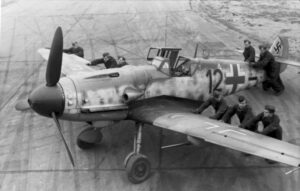
Messerschmitt Bf 109
The Messerschmitt Bf 109 is a German fighter aircraft and the backbone of the Luftwaffe’s force during World War II.

Focke-Wulf Fw 190
The Focke-Wulf Fw 190 was a German single-seat, single-engine fighter aircraft and the backbone of the Jagdwaffe of the Luftwaffe.

Junkers Ju 88
The Junkers Ju 88 was a German Luftwaffe twin-engined multirole combat aircraft introduced in 1939 and used widely during World War II.
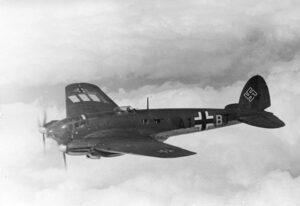
Heinkel He 111
The Heinkel He 111 was a German airliner and bomber described as a “wolf in sheep’s clothing” as it presented solely as a civil airliner.

Junkers Ju 87 Stuka
The Junkers Ju 87 was a German Luftwaffe dive bomber and ground-attack aircraft first flown in 1935 and used during World War II.
History of the Luftwaffe and
Its Aircraft: A Timeline
Explore the history of this German institution through a handy timeline with dates, images, and links to the different aircraft.
1933
Creation of the Luftwaffe: On March 1, 1935, the Luftwaffe, the air force of Nazi Germany, is officially established. Hermann Göring is appointed as its commander-in-chief.
1936-1939
Spanish Civil War: The Luftwaffe gains combat experience by actively participating in the Spanish Civil War (1936-1939), supporting General Francisco Franco’s Nationalist forces.
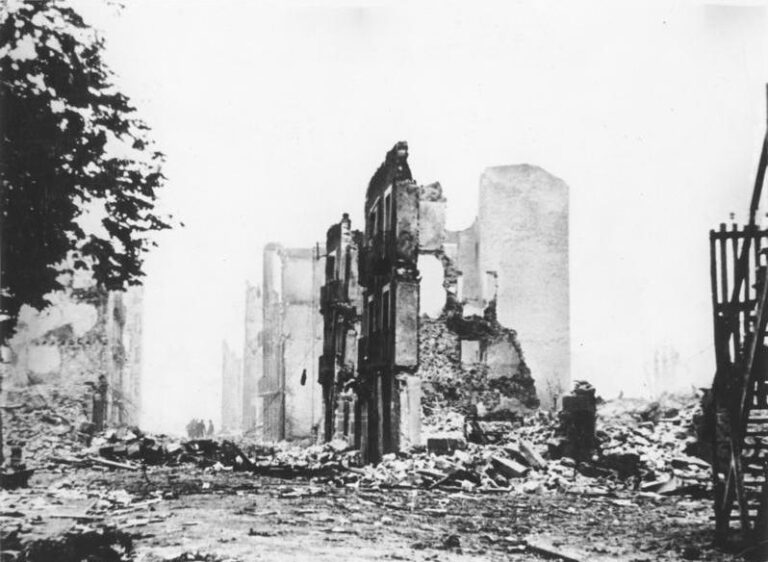
1939-1940
Blitzkrieg Tactics: The Luftwaffe showcases its effectiveness in the Blitzkrieg (lightning war) tactics during the invasions of Poland (1939) and the Low Countries and France (1940). The Ju 87 Stuka dive bomber becomes a symbol of German air power.
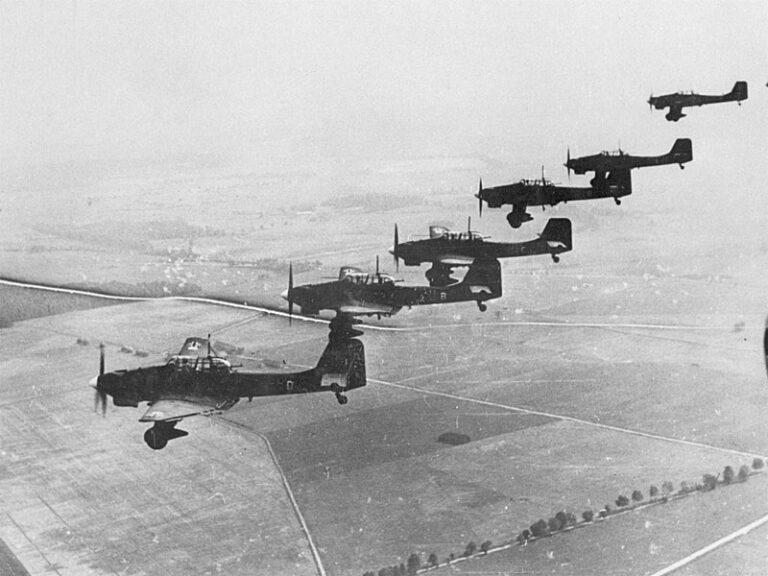
1940-1941
Battle of Britain: The Luftwaffe engages in the Battle of Britain, attempting to establish air superiority over the United Kingdom. Despite initial successes, the sustained efforts of the Royal Air Force led to a German defeat in the air campaign.

1941-1942
Eastern Front and the Mediterranean: The Luftwaffe supports German forces on the Eastern Front and in the Mediterranean, participating in the invasion of the Soviet Union (Operation Barbarossa) and the North African campaign.
1942-1943
Stalingrad and Strategic Bombing: The Luftwaffe faces challenges on the Eastern Front, notably during the Battle of Stalingrad. The strategic bombing campaign against British cities intensifies, with the introduction of heavy bombers like the Focke-Wulf Fw 200 Condor.

1943-1944
Strategic Retreat: As Germany faces setbacks on multiple fronts, the Luftwaffe begins a strategic retreat. The effectiveness of Allied bombing campaigns increases, leading to substantial losses for the German air force.
1944-1945
Operation Bodenplatte and the Defense of the Reich: The Luftwaffe launches Operation Bodenplatte in 1945, attempting to regain air superiority over the Western Front. However, the campaign results in heavy losses for the Luftwaffe. The Defense of the Reich becomes increasingly difficult as Allied forces advance.
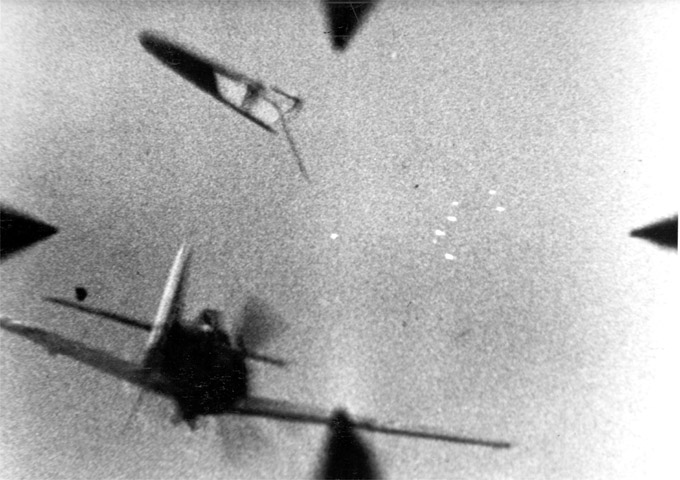
1945
End of World War II: With Germany’s surrender in May 1945, the Luftwaffe is disbanded. Its legacy includes technological innovations, such as the Me 262 jet fighter, but it also stands as a symbol of the challenges faced by German forces in the latter stages of the war.

